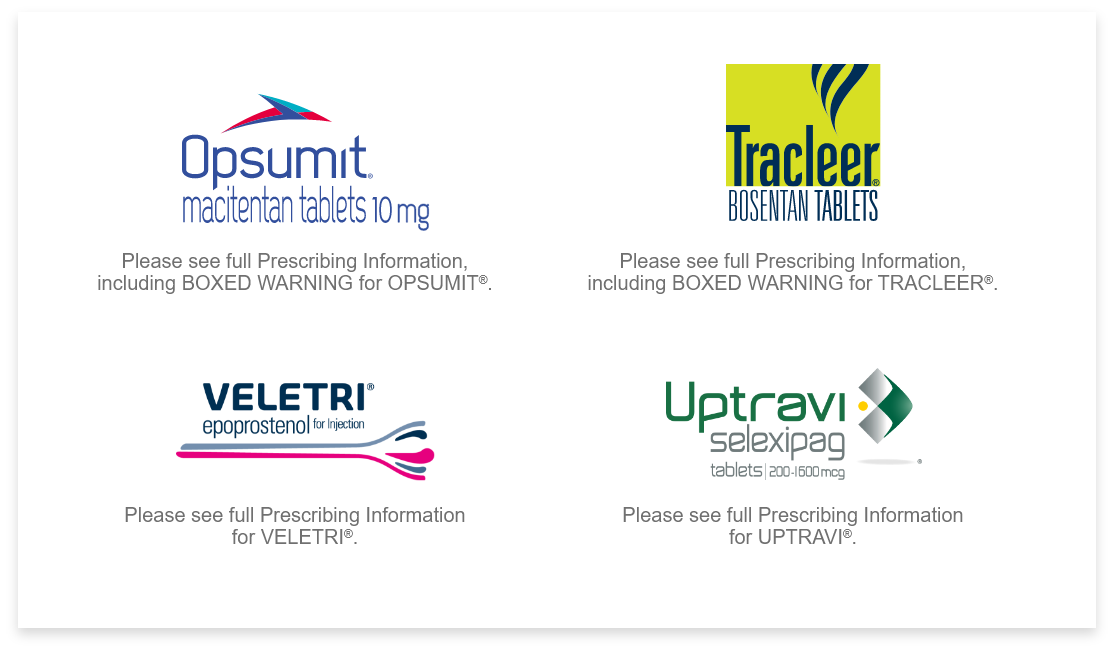Efficacy
VENTAVIS® (iloprost) Inhalation Solution is the first pulmonary arterial hypertension (PAH) therapy in which clinical improvement was the primary endpoint of study design. In a placebo-controlled, randomized, double-blind, multicenter study, patients in the VENTAVIS group saw a nearly 5-fold improvement in clinical endpoint versus patients in the placebo group.1
Demonstrated significant clinical improvement through a combined endpoint†1

Approximately 5 to 1
improvement vs placebo in a combined endpoint at Week 121
†AIR Pivotal Trial Randomized, double-blind, multicenter, placebo-controlled trial to evaluate the efficacy and safety of VENTAVIS monotherapy compared with placebo in the treatment of PAH (WHO Group 1) NYHA Functional Class III or IV (n=146). Clinical improvement is a combined endpoint defined as ≥ 10% increase in 6MWD, improvement in NYHA Functional Class, and absence of clinical deterioration or death.1,4 |
||
|---|---|---|
Clinical improvement: A combined endpoint covering a spectrum of PAH efficacy1
Response rates1
VENTAVIS has demonstrated significant clinical improvement through a combined endpoint: 19% VENTAVIS vs 4% placebo (p=0.0033). The combined endpoint consisted of 3 factors:
| Absence of clinical deterioration or death | Improvement in NYHA Functional Class | ≥10% increase in 6-minute walk distance (6MWD) |
|
96% VENTAVIS 87% placebo |
25% VENTAVIS 8% placebo |
43% VENTAVIS 26% placebo |
INDICATION
VENTAVIS® (iloprost) Inhalation Solution is indicated for the treatment of pulmonary arterial hypertension (PAH) (WHO Group 1) to improve a composite endpoint consisting of exercise tolerance, symptoms (NYHA Class), and lack of deterioration. Studies establishing effectiveness included predominantly patients with NYHA Functional Class III-IV symptoms and etiologies of idiopathic or heritable PAH (65%) or PAH associated with connective tissue disease (23%).
IMPORTANT SAFETY INFORMATION
WARNINGS AND PRECAUTIONS
Risk of Syncope
- Vital signs should be monitored while initiating VENTAVIS. Hypotension leading to syncope has been observed; VENTAVIS should therefore not be initiated in patients with systolic blood pressure less than 85 mmHg.
Pulmonary Venous Hypertension
- Stop VENTAVIS immediately if signs of pulmonary edema occur; this may be a sign of pulmonary venous hypertension.
Bronchospasm
- VENTAVIS inhalation may cause bronchospasm and patients with a history of hyperreactive airway disease may be more sensitive.
ADVERSE REACTIONS
Serious Adverse Events
- Serious adverse events reported include congestive heart failure, chest pain, supraventricular tachycardia, dyspnea, peripheral edema, and kidney failure.
Adverse Events
- Adverse events reported in a Phase 3 clinical trial occurring with a ≥3% difference between VENTAVIS patients and placebo patients were vasodilation (flushing) (27% vs 9%), increased cough (39% vs 26%), headache (30% vs 20%), trismus (12% vs 3%), insomnia (8% vs 2%), nausea (13% vs 8%), hypotension (11% vs 6%), vomiting (7% vs 2%), alkaline phosphatase increased (6% vs 1%), flu syndrome (14% vs 10%), back pain (7% vs 3%), tongue pain (4% vs 0%), palpitations (7% vs 4%), syncope (8% vs 5%), GGT increased (6% vs 3%), muscle cramps (6% vs 3%), hemoptysis (5% vs 2%), and pneumonia (4% vs 1%).
DRUG INTERACTIONS
Antihypertensives and Vasodilators
- VENTAVIS has the potential to increase the hypotensive effect of vasodilators and antihypertensive agents.
Anticoagulants and Platelet Inhibitors
- VENTAVIS also has the potential to increase risk of bleeding, particularly in patients maintained on anticoagulants or platelet inhibitors.
SPECIFIC POPULATIONS
Lactation
- Advise not to breastfeed during treatment with VENTAVIS.
Please see full Prescribing Information.
cp-134777v3

